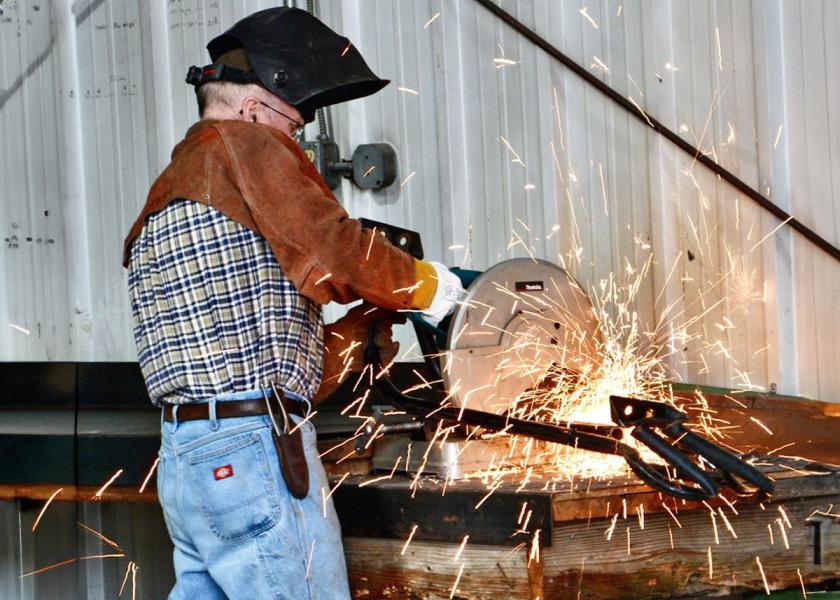Is It Time to Upgrade Grandpa’s Metal-Cutting Chop Saw?

Forty years ago, the abrasive disk chop saw flooded into farm shops across the country. Compared to using either a hack saw or an acetylene torch to cut dimensional steel, the chop saw was an easy investment. The screeching whine and shower of sparks of a chop saw bisecting a piece of angle iron became part of shop repairs and fabrication all across the land.
A new version of the chop saw is quickly relegating those original soot-covered noise machines to the back corners of farm shops. Their name — metal-cutting miter saw — reveals the reason for their quick acceptance. Where conventional chop saws use an abrasive disk to gnaw a rough-edged slot through dimensional metal, the new metal cutting miter saws use a toothed blade that literally cuts through metal, leaving a smooth-edged cut.
Two things to know about metal-cutting miter saws:
1.) They use specially-designed high-torque electric motors, so forget about putting a metal cutting blade in the wood-cutting miter saw you use for carpentry; manufacturers prevent that by using a different arbor size for each type of saw.
2.) The blades for metal-cutting miter saws are pricey — from $60 to $170 each, compared with abrasive disks that sell for $10 to $20 a piece.
The pricey blades last longer than abrasive disks, cut more precisely and leave nearly burr-free edges. As the original wave of chop saws ages-out, metal-cutting miter saws are a popular replacement.







